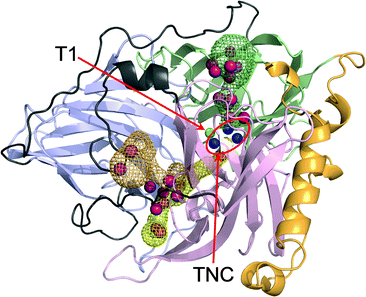 Christopher F. Blanford’s group from the University of Oxford have solved the x-ray structure for bilirubin oxidase from the plant pathogen Myrothecium verrucaria. This enzyme efficiently catalyses the oxidation of bilirubin to biliverdin, and can be used in O2 reduction.
Christopher F. Blanford’s group from the University of Oxford have solved the x-ray structure for bilirubin oxidase from the plant pathogen Myrothecium verrucaria. This enzyme efficiently catalyses the oxidation of bilirubin to biliverdin, and can be used in O2 reduction.
The authors look at the environment of the copper in the enzyme, to better understand and improve its stability when is attached to the carbon surface of a pyrolytic graphite electrode. When attached to an electrode it can act as a cathode catalyst, and this enhanced electrocatalytic response of the material is an important step in developing viable low-temperature bio-fuel cells.
Read the full article for FREE to find out more about bilirubin oxidase…
Bilirubin oxidase from Myrothecium verrucaria: X-ray determination of the complete crystal structure and a rational surface modification for enhanced electrocatalytic O2 reduction
James A. Cracknell, Thomas P. McNamara, Edward D. Lowe and Christopher F. Blanford
Dalton Trans., 2011, DOI: 10.1039/C0DT01403F










